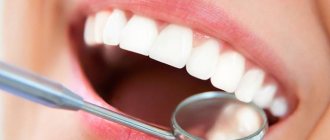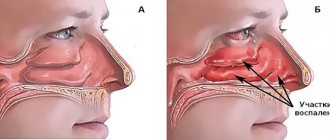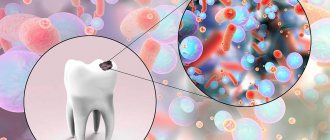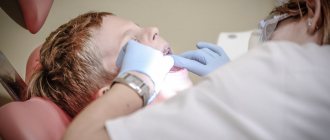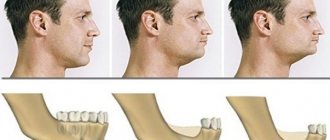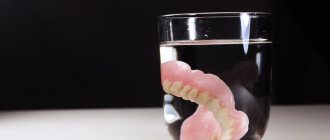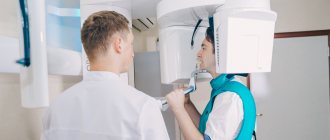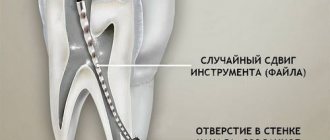Publication date: 01/25/2021
Every person's teeth are designed to last for many years. They have several levels of protection:
- Enamel is a highly durable mineralized tissue that protects the surface of the tooth.
- Dentin is a less hard tissue, but also strong. The main task of dentin is to protect the pulp - the inner tissue. It is the nerve endings in the pulp that signal us about the problem. If the surface layers are broken, we experience pain.
- Cement - covers the roots, protecting them from adverse influences
Overcoming these layers of defense is not easy, but it is possible. And then the teeth rot.
Causes of rotting
In the first place is fear. It is the irrational fear of the dentist, which is difficult to control, that makes us put off visiting the doctor. Often to the point where it is no longer possible to save the tooth. No matter what facts they give us, no matter how much we persuade ourselves, phobias do not lend themselves to rational arguments.
But this is far from the only reason.
General diseases
Our body is a single system. Discord in one place leads to problems in another. Thus, diseases of the gastrointestinal tract cause dental problems.
Infections, fungal diseases, even hormonal imbalances often lead to inflammatory processes in the mouth.
Ecological problems
In regions where drinking water is of poor quality, dental problems are 3-4 times more common. The same picture is observed where there are large industrial enterprises. Increased amounts of toxic microelements in the environment harm overall health and negatively affect teeth.
Diet
There are foods that provoke the growth of bacteria in the oral cavity, which means they contribute to tooth decay. Yes, that same sugar, but not only that. Acids formed during the fermentation of carbohydrates are the main enemies of enamel.
Lifestyle
Addictions of any kind are not good for dental health. Cigarettes, drugs, alcohol are a direct path to problems.
This also includes restrictive diets. Vegetarians, vegans, and Keto fans need to carefully ensure that the body receives all trace elements and vitamins.
Oral diseases
Inflammatory processes in the mouth are a haven for bacteria. Therefore, it is important to regularly carry out sanitation and ultrasonic cleaning of teeth. Periodontal disease, periodontitis, stomatitis, gingevitis, cheilitis require special treatment, which is better not to delay.
Oral hygiene
This is perhaps the easiest way to destroy teeth. All that’s left to do is brush and floss twice a day. 90% of the population does this, but not as carefully as we would like. There are special teeth cleaning schemes. They involve treating surfaces from all sides and for a certain time. Unfortunately, now
90% are those who brush their teeth for less than 1 minute.
Genetic predisposition
Alas, often all preventive measures are not able to help keep teeth safe and sound. Healthy, strong teeth, just like bad ones, are inherited.
Why do teeth rot?
Unfortunately, almost any patient can experience tooth decay. Causes of pathology:
- mechanical or chemical injury to the enamel or crown, leading to rapid destruction of dentin and pulp;
- poor oral hygiene - lack of regular brushing, incorrect selection of toothbrushes and toothpastes;
- bad habits - alcohol abuse, frequent smoking, drugs;
- poor ecology - for this reason, rotten molars are increasingly diagnosed among residents of megacities;
- unbalanced diet - a small amount of vegetables and fruits in the diet, excessive consumption of sweet and flour products;
- lack of vitamins and minerals - primarily a lack of fluoride and calcium;
- heredity - genetic predisposition to the rapid destruction of enamel and dentin;
- untreated dental diseases - advanced caries, pulpitis, gum and periodontal diseases;
- general decline in immunity - teeth often rot during serious chronic diseases of internal organs and systems, during pregnancy, and during periods of active growth in adolescents.
Online consultation with a doctor
If you are concerned about the condition of your teeth and the symptoms described in this article: putrid odor, pain when biting, sensitivity of the enamel to cold, hot, sour, sweet, dark holes on the tooth, then it is best to undergo an examination and consultation with a dentist. Because these may be symptoms of deep caries, cysts, and other diseases. Bacteria or infection, entering the blood or lymph, affect healthy tissues, causing complications and illnesses. Which, if neglected, will lead to more expensive treatment:
- depulpation;
- dental restoration;
- deletion;
- dental implantation;
- prosthetics;
- treatment of adentia.
How to identify rotten tooth roots and rotten teeth
Why are rotten teeth dangerous? First of all, unpleasant sensations. It is discomfort that serves as a signal of problems with dental health. The following symptoms should alert you:
- rapid formation of plaque on enamel;
- unpleasant putrid odor from the mouth;
- painful reaction to hot or cold, to sweet foods;
- pain or even mobility of teeth when chewing;
- stains on tooth enamel - yellow, brown, black;
- swelling of the gums in the area of the decayed neck of the tooth;
- purulent discharge;
- constantly increasing pain.
At the same time, the patient should not be reassured by the disappearance of pain and discomfort due to rotten teeth. The inflammatory processes did not stop or reverse. The absence of pain only indicates that the root of the tooth has begun to rot.
Stages of decay development
There is no acute form of caries, so small changes are difficult to notice, they accumulate - and now a person cannot smile, only stumps of teeth remain. Therefore, it is important to undergo preventive examinations regularly. The dentist can identify the problem at the initial stage and can easily fix it.
- Rotting begins at the spot stage. The color of part of the surface changes. Enamel demineralization begins. At this stage, treatment is quick and easy.
- The superficial process of demineralization is increasing, but the pain syndrome has not yet manifested itself. The tooth can react to sweet, sour, cold, hot.
- Middle stage The lesion reaches the enamel-dentin junction. Painful sensations occur periodically. Large areas are affected.
- Deep damage The decay process affects the dentin surrounding the pulp. If this process is left unattended, pulpitis will develop. And this is far from the only problem.
How to protect yourself from complications of dental diseases
To avoid any complications, it is best to prevent the diseases themselves. There is nothing complicated here:
- 1. Brushing your teeth twice daily. In this case, it is necessary to change your toothbrush in a timely manner (usually once every three months) and carefully choose toothpaste, taking into account the doctor’s recommendations;
- 2. Regular visits to the dentist. If you go to the doctor every six months, you will be able to either completely avoid caries, or cure it at the earliest stage - quickly and without any discomfort;
- 3. If a tooth has been removed or deformed (part of it has broken off, a filling has fallen out), you also need the help of a doctor. Such violations spoil the bite, and the load on neighboring teeth will increase. They will become more vulnerable to adverse effects.
Of course, to avoid complications, you should immediately consult a specialist as soon as a pathological process or painful sensations are noticed.
Complications
Bad teeth are a direct path to a heart attack
. When the tooth's protection is destroyed, bacteria enter directly into the bloodstream. There they can provoke the development of blood clots, inflammation of blood vessels, and this leads to the development of coronary artery disease, which is not far from a heart attack.
Gastrointestinal problems
Rotten teeth make it difficult to chew food well. Not only do poorly chewed pieces irritate the mucous membrane, pathogenic flora from damaged teeth enters the stomach and intestines, where they can multiply uncontrollably, causing diseases such as gastritis, pancreatitis, stomach ulcers and duodenal ulcers. Competent gastroenterologists always advise visiting a dentist.
Diseases of the throat and nose
A constant source of infection in the mouth means that any malfunction in the body will cause a relapse of diseases such as sore throat and sinusitis. Purulent infections are dangerous because they can lead to blood poisoning. And such diseases are difficult, often causing complications. Inflammation of the tonsils often causes rheumatism and heart problems. Those who struggle with chronic sinusitis need to especially carefully monitor the condition of the oral cavity. Chronic manifestations will not go away if there are rotten teeth in the mouth.
And the head too
An advanced inflammatory process can spread to the trigeminal nerve. It is closely connected with the brain, and this is a serious matter. Chronic migraines, memory problems, even Alzheimer's disease are associated with oral health. Although there is no direct evidence that Alzheimer's is caused by the same bacteria that cause inflammation in the mouth, it is better to be on the safe side.
Abscesses and cellulitis are also the result of bacterial inflammation.
Dental root caries: causes
Root caries occurs as a complication of gum disease, in which pathological pockets form between the tooth and gum. They accumulate food debris and pathogenic microbes. They are difficult to remove with a toothbrush and require professional cleaning at the dentist's office.
Without proper oral care, cariogenic bacteria multiply rapidly. They secrete acids that corrode the cement of the tooth root. Gradually, microorganisms penetrate deep into hard tissues down to the pulp, causing pain.
Often this pathological process is caused by osteomyelitis, periodontitis, periodontitis or periostitis, that is, inflammatory diseases of the gums and hard tissues of the oral cavity. Indirect causes of the development of tooth root caries are past infectious diseases and reduced immunity. In addition, the likelihood of carious lesions increases with tobacco smoking, alcohol abuse, poor diet and lack of vitamins and minerals in the body.
If a person rarely brushes his teeth or does it incorrectly, the carious process spreads even faster. As a result, you can lose a tooth without even feeling symptoms of the disease. As a rule, the first signs appear after the pathology has affected most of the tooth root.
What to do when the process of tooth decay begins
Modern dentistry is not about pain at all. This is about caring for the patient and the desire to preserve his teeth.
Dentists' advice is simple, but how many people follow it?
How to prevent teeth from rotting:
- Lead a healthy lifestyle
- Takes good care of your teeth
- Carry out hygiene procedures regularly
- Monitor your general health
Plaque on teeth is the beginning of the decay process. Regular cleaning of tartar is one way to keep your teeth healthy.
Caries on baby teeth
As a result of long-term research, scientists were able to identify the main cause of caries in baby teeth. It becomes: microorganisms transmitted to the child from the mother. Streptococcus gets to the baby through a kiss, through a pacifier licked by the mother, or shared cutlery. Microbes come from other people through these same routes. When teething, babies are especially vulnerable to streptococcus. In addition, lack of oral hygiene, poor diet, and the composition of saliva have a negative impact.
Dentists point out that regular use of baby formulas from a bottle with a high carbohydrate content creates ideal conditions for the development of bacteria. Getting your baby used to a cup and rinsing his mouth after eating helps reduce their negative effects.
previous post
Pin in a tooth: types and advantages of design
next post
Treatment
Sick teeth need to be treated, the sooner the better. The dentist’s task is to save the tooth, but if measures are not taken in time, it will have to be removed to avoid serious consequences.
Methods:
- Remineralization Applications of calcium and fluoride preparations and electrophoresis help restore enamel at the initial stage.
- Filling the cavity The affected tissues are removed, their place is filled with filling material.
- Partial prosthetics A crown is placed on the tooth, which protects it from mechanical and biological influences. The crown is placed on a previously depulped, dead tooth.
- Removal If the pulp is affected and the inflammatory process threatens to develop into an abscess, the tooth is pulled out. You should not resist the removal of rotten teeth - they do nothing but harm.
It is easier to prevent any process than to take a long time to eliminate the consequences. By following simple preventive measures and regularly visiting the doctor, you can avoid tooth decay and maintain your smile and self-confidence for many years.
Content
- Causes of tooth decay
- Signs
- Dental diagnostics
- Methods of dental treatment
Pathological changes in teeth restored with crowns are an extremely unpleasant situation and, moreover, dangerous for the health of the entire body. With the correct use of a well-made and installed crown, the likelihood of such problems occurring is minimized. However, cases of tooth decay under crowns still occur. It is important to recognize the problem in time and seek help from a doctor.
PROMOTION
Zirconium crowns and bridges
RUB 12,500
How to treat the problem
The solution to the problem under consideration requires an integrated approach. Before starting symptomatic treatment, it is necessary to identify and eliminate the root cause of the development of putrefactive processes. So, the generalized diagram looks like this:
- X-ray examination: allows you to assess the degree of development of the lesion and the condition of the internal structures. Based on the complete clinical picture, the specialist draws up an optimal treatment plan, if there is still a chance to save the teeth,
- antiseptic treatment of the oral cavity, which usually uses drugs such as Chlorhexidine and Metrogyl. The patient may also be prescribed antiseptic gels and rinses with an anti-inflammatory effect, professional cleaning of plaque and hard deposits,
- recovery: Antibacterial therapy is usually used to ensure that the infection is eliminated. The necessary antibiotics can only be prescribed by a specialist, and the independent use of any drugs is strictly prohibited. In order to restore the condition of the oral cavity, all carious cavities are cleaned, filled and the enamel is coated with fluoride-containing varnishes,
- removal of severely damaged teeth: when destructive processes penetrate the pulp and root, the diseased tooth is removed and replaced with an artificial crown.
As you already understand, it is extremely important to treat baby teeth, because otherwise problems with permanent teeth cannot be avoided. A rotten tooth is an open source of infection, which can provoke the development of serious problems with the body as a whole. And you should not try to solve the problem yourself, since only professional treatment by a dentist can guarantee the desired result.
- Ulitovsky S.B. Causes of non-carious lesions of teeth, 2001.
In children
This unpleasant and even dangerous phenomenon occurs not only in adults. Quite often, tooth decay begins in young children. Moreover, this can happen even before the entire row of baby teeth is formed.
Often parents are very frightened by the speed of this process. Indeed, literally within a few months after eruption, decay can reach an already obvious and complex stage.
For children there are no special separate causes of this disease. They are the same as for adults. However, some of them are more important.
- Firstly, this is the huge consumption of caramel and other sweets , to which children are partial.
- Secondly, children often do not devote enough time to hygiene procedures . Therefore, all destructive factors are much stronger.
- Thirdly, one of the reasons appears, which can conditionally be attributed to heredity. This is poor nutrition and the use of any harmful and unauthorized substances by the mother during pregnancy , including medications.
- Fourthly, baby teeth are much more susceptible to both external and internal factors . That is why all processes that contribute to rotting occur faster.
As soon as parents discover the initial stages of tooth decay in a child, they should immediately contact a pediatric dentist. It is almost impossible to cope with this problem on your own at home.
Where do the roots come from?
Caries (caries - “rotting”) is one of the most common human diseases, which is increasingly gaining momentum. About 42% of the world's population has dental caries [1]. However, this problem is far from exclusively human (Fig. 1).
Figure 1. Caries occurs quite widely in the animal kingdom, especially in ungulates. Above is a photo of a horse's teeth, below is a photo of a human.
Idade dos cavalos pelos dentes, “Complications in the treatment of dental caries in children”
It is now reliably known that the vital activity of oral bacteria leads to the occurrence of caries. Bacteria, like all living organisms, must eat, grow and reproduce, and also maintain their metabolism (metabolism) at the proper level. But not all bacteria in our mouths lead to tooth decay. Cariogenic bacteria include streptococci (Streptococcus mutans, Str. sanguis, Str. mitis, Str. salivarius) and some lactobacilli (Lactobacillus acidophilus) [2–4].
You can learn about who lives in the oral cavity and how individual representatives of its microflora affect our health from the article “Who lives in our mouth?” [5] special project “Biology, medicine and cosmetology of the oral cavity”. - Ed.
Like many other diseases, caries develops in several stages.
Anaerobic bacteria live in the form of a thin biofilm on the enamel of teeth - plaque. Fixing on the surface of the tooth, they produce extracellular heteropolysaccharides necessary to create comfortable living conditions for themselves, namely to reduce contact with oxygen. Often, the synthesis of such extracellular polysaccharides requires exclusively sucrose, as occurs in Streptococcus mutans (Fig. 2).
Figure 2. Streptococcus mutans is a species of gram-positive facultative anaerobic bacteria whose activity is directly associated with the development of caries. Streptococci, due to their structure (form chains) and the presence of a special receptor that allows them to attach to the smooth surface of the enamel, are most often found in dental plaque. Using sucrose, they synthesize sticky polysaccharides based on dextran, forming a biofilm on the tooth, thereby providing themselves with anaerobic living conditions.
"Wikipedia"
A person eats carbohydrates, and streptococci “eat” them along with him. Hence the direct relationship: the more sugar you ate, the more plaque formed. And the sweeter a person’s life, the better for streptococci: during the fermentation of carbohydrates (glycolysis), they receive energy for their vital functions, and from sucrose they build their protective coating - a “shell” from oxygen. The average time for visible and palpable plaque to form is 3–6 hours, and it takes about 24 hours for a dense bacterial biofilm to form.
For people, the activity of plaque bacteria has its disadvantages. They produce a large number of by-product organic acids, including pyruvic, formic, acetic and propionic acids [3]. And lactobacilli also produce lactic acid. The combination of all the released acids inevitably reduces the pH (increases the acidity) of that part of the oral cavity where the most active fermentation of carbohydrates occurs - in the folds of the enamel. At first, excessive acidity is neutralized by saliva, but the longer bacteria live on the tooth (you must understand that time flows differently for bacteria), the more heteropolysaccharides they secrete, and the more difficult it is for saliva to break through the growing shell of plaque. The critical pH value for tooth enamel is considered to be 5.5. It is at this value that caries begins to develop and demineralization of tooth enamel occurs (Fig. 3).
Figure 3. pH is very important for teeth. The normal pH of the oral cavity in the range of 6.8–7.4 is ensured by the buffering properties of saliva. A shift in the indicator to the acidic side to 5.5 is critical and indicates an active process of caries formation.
drawing by Anastasia Prokhorova
How to deal with this disease?
In any case, an integrated approach is used to treat rotting teeth. First of all, the original cause of the disease must be established . After this, appropriate medications and procedures must be prescribed .
This is necessary because if the cause is not eliminated, then treating the symptoms will only give short-term results.
Simultaneously with the elimination of the cause, the necessary dental treatment . Depending on the stage of the disease, these measures may vary. However, in any case, foci of infection are also identified and must be eliminated.
The complex of treatment measures will most likely include giving up bad habits, restructuring the nutrition system, and strengthening hygiene measures.
In any case, you should not try to cure rotting teeth yourself, as the problem can be significantly worsened and then more difficult to eliminate. Modern dentistry is painless and very effective, so you should not be afraid of going to the doctor.
And don’t forget about prevention and proper care, because any illness is easier to prevent! Let's watch a short video:
If you find an error, please select a piece of text and press Ctrl+Enter.
Tags
Did you like the article? stay tuned
Previous article
Toothpaste “Crest” – description of varieties
Next article
Splat toothpaste – types, features and reviews
